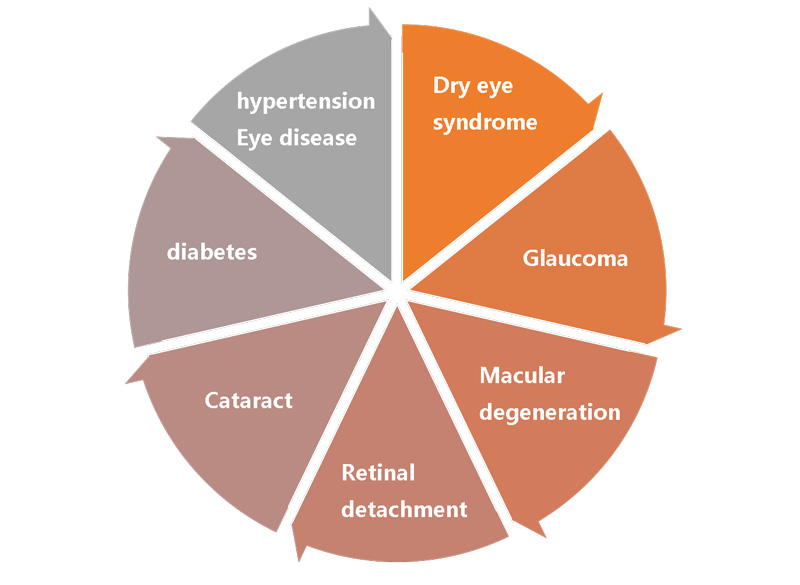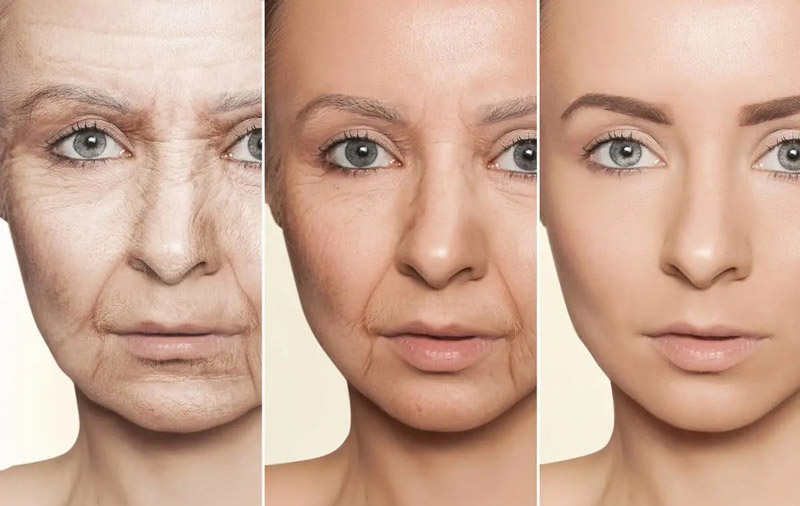"blurred vision" eroded by time: It's far more than just presbyopia
As people enter middle and old age, "dim eyesight" seems to become an inescapable natural phenomenon.
Many people simply equate it with "presbyopia", yet the aging process of the eyes is far more complicated than that.
In fact, as people age, the risk of a series of eye diseases that threaten vision increases significantly.
This includes the widely troubled dry eye syndrome, as well as serious consequences such as macular degeneration, glaucoma, cataracts and retinal detachment.
What is even more important to note is that systemic diseases such as diabetes and hypertension may also cause serious damage to eye health and even lead to blindness.
Tracing back to the root cause, these age-related vision decline problems are essentially inseparable from the aging process of cells.
As the concentration of the key coenzyme NAD+ within cells decreases, the energy production function of mitochondria becomes impaired, eventually leading to the death of retinal cells and the gradual decline of visual function.
Can supplementing its precursor substance NMN to increase NAD+ levels bring a turning point for delaying eye aging?
Multiple studies have indeed sent out positive signals.
potential assistance of NMN in combating eye aging
Discovering the Dawn (2016 Study) :
At the end of 2016, the team led by Shinichiro Imai from Washington University in St. Louis revealed the multiple potentials of NMN in improving metabolism and immune regulation, including its positive impact on eye function.

They selected the C57BL/6N mouse model which is prone to age-related fundus lesions.
Experiments have found that the fundus of older mice (17 months old) usually shows obvious light-colored spots.
When these mice continuously consumed 100 or 300 milligrams of NMN per kilogram of body weight daily for 12 months, the abnormal deposits in their fundus significantly subsided.
Tests on lacrimal gland function (which deteriorates with age in both humans and rodents) have shown that supplementing NMN effectively increased the tear secretion of experimental animals.

Directly Addressing Root Causes of Macular Degeneration (2020 Study) :
In mid-2020, researchers from the University of Minnesota published an important achievement:
NMN may combat age-related macular degeneration (AMD) by improving mitochondrial function in the retina.

The key to blindness caused by AMD lies in the insufficient energy supply to retinal pigment epithelial cells (RPE) - aging mitochondria cannot provide sufficient energy for these critical visual cells, leading to cell death.
The study found that about half of the test samples saw their mitochondrial energy productivity increase by 50% to 350% after exposure to NMN, significantly boosting the synthesis of the cellular energy currency ATP and thereby exerting a positive effect on visual function.
What is particularly remarkable is that this improvement effect takes effect rapidly, usually reaching its peak within 24 hours.

Neuroprotection and Multiple Defenses (2020 Study) :
At the end of 2020, a study by a team from Harvard Medical School published in the journal Aging provided more evidence.
They found that NMN could significantly increase the NAD+ level in retinal tissue, thereby activating the key longevity protein SIRT1 pathway and enhancing the expression of the antioxidant enzyme heme oxygenase-1.
This biochemical change has a powerful neuroprotective effect on photoreceptor cells (responsible for light perception) that have suffered oxidative damage and can inhibit the deterioration process of serious eye diseases such as retinal detachment.

In early mouse models of retinal detachment (RD), supplementation of NMN at doses of 250 mg/kg or 500 mg/kg reduced the number of photoreceptor cell deaths by more than 50% and 70%, respectively.

The research also observed that NMN supplementation can effectively inhibit the inflammatory response in the retinal region and alleviate the damage caused by oxidative stress.
Even in the later stage of retinal detachment, NMN still shows a certain protective effect.
A deeper exploration of its mechanism reveals that the core lies in the fact that NMN activates SIRT1 after increasing NAD+.
SIRT1 is crucial for maintaining the development and survival of retinal cells.
Previous studies have found that abnormal changes in SIRT1 activity exist in the retinas of the elderly and various retinal diseases (such as diabetic retinopathy, photodamage degeneration, and ischemic lesions).
This means that the NMN intervention strategy may have potential improvement value for these extensive eye problems.
Summary: eye protection potential of NMN
based on existing research, NMN demonstrates potential in combating eye aging through the following mechanisms:
Enhance tear secretion capacity and relieve dry eye discomfort.
Reduce abnormal deposits in the fundus and maintain retinal health.
Optimize the function of retinal mitochondria to ensure the energy supply for visual cells.
Provide new intervention ideas for combating macular degeneration.
Inhibit the process of retinal detachment and protect photoreceptor cells.
Reduce retinal inflammation and oxidative damage and provide comprehensive protection.
References
[1] Shin-Ichiro Imai, et al. Long-Term Administration of Nicotinamide Mononucleotide Mitigates Age-Associated Physiological Decline in Mice. Cell metabolism. 2016 Dec 13;24(6):795-806.
[2] Deborah A. Ferringtona, et al. Improving retinal mitochondrial function as a treatment for age-related macular degeneration. Redox Biol. 2020 Jul; 34: 101552.
[3] David A. Sinclair, Demetrios G. Vavvas, et al. Neuroprotective effects and mechanisms of action of nicotinamide mononucleotide (NMN) in a photoreceptor degenerative model of retinal detachment. Aging. 2020 Dec 31; 12(24): 24504–24521.






